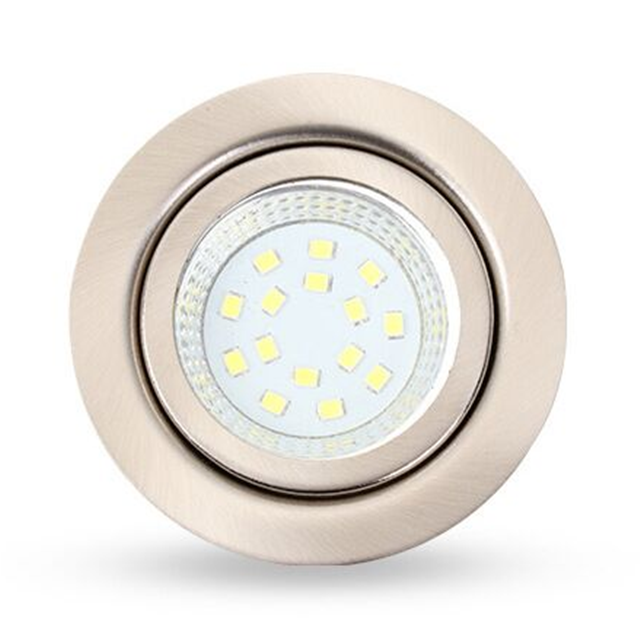If you've been shopping around for an LED light or other LED product for RVs and vehicles, you are likely aware that these products do not run on line voltage (120/240 V AC) and instead, you will see 12V DC as a common option. Before you move forward with that purchase, see below for our list of advantages and disadvantages of a 12V LED system!
Top 3 advantages of a 12V LED system
1. A 12V DC LED system is a common voltage platform. Many electrical systems operate on 12V DC, and you are probably already familiar with several of these. Many batteries for vehicles including boats and RVs operate on 12V DC, which makes using a 12V LED system a no-brainer for these applications, as there is no need for any additional transformers or power supplies to convert the voltage - your LED lights can be plugged in directly.
On the other hand, even if you are not going to be using batteries, you will still need to rely on power supply units. 12V is a very common voltage level primarily due to its common use in desktop computing. This makes power supplies readily and cheaply available and can help reduce your purchase costs.
2. 12V LED systems have a lower electric shock risk. When it comes to LED product safety, optical, shock and fire risk are often considered. Because 12V is a much lower voltage compared to line voltage (120/240V), it is more difficult for the electrical current to overcome the built-in resistance of human skin and other objects. This makes it safer for hobbyists who want to experiment with products such as LED strips. Generally, if you accidentally create a short circuit, you will not see any sparks or loud bangs that you would see with line voltage systems.
Because of the general safety advantage of 12V LED systems, product design can be simplified as well. For example, high voltage systems will almost always require UL or ETL testing to be approved for sale in the United States and Canada. To pass these certifications, products must meet a stringent set of safety rules that include rules about minimum wire spacing and insulation.
One caveat is that 12V LED systems do not have any significantly lower optical or fire safety risk. Optical safety is dependent on the intensity and wavelength of light emitted by the LED - something that is independent of the LED system voltage. Similarly, fire safety is related to the total amount of energy involved - even at low voltages high amounts of current can easily create a fire hazard. For reference, the UL standard for low voltage lighting systems (2106) is limited to systems that carry less than X watts in total.
3. 12V LED systems are more reliable, and can be repaired and serviced.In addition to the LED chips, a line voltage LED product must also contain complex electronics such as capacitors that convert AC line voltage into DC so that it can be used by the LEDs. For many products, these electronics components must be condensed and mounted onto a small circuitboard that is in turn placed inside of the bulb, where temperatures can soar due to the heat emitted by the LEDs. In many cases, premature LED bulb failures are not caused by a failure of the LED chips themselves, but the electronics that are located inside. Typically, capacitors will fail and cause the LED bulb to begin blinking.
In 12V LED systems, the transformer and power supply are located away from the LEDs, typically in a cool and vented area. This improves the reliability of the electronics, and most significantly, allows for the faulty electronics to be repaired or replaced with ease. A faulty LED bulb is typically non-serviceable, meaning that a single faulty capacitor can mean a bulb must be thrown out even if all of the LEDs on the bulb are working fine. In a 12V LED system, faulty components can be replaced piecemeal, which can make repairs easier and reduce your total cost of ownership.
3 disadvantages of a 12V LED system
1. Low electrical efficiency. With 12V systems, the lower voltage means more current must be supplied to compensate. For example, a 120V LED system will pull 1 Amp in a 120 Watt system, while a 12V LED system will need to pull 10 Amps to power the same 120 Watt system.
Why does the amperage matter? Amperage (current) is generally limited by the amount of conducting material is available in a circuit (e.g. wire gauge or thickness). Once the amperage limit is approached, instead of being able to carry the electrical current, a conductor will begin to turn this excess current into heat energy instead.
-
 How to Install Heat Pad on Mirror?
How to Install Heat Pad on Mirror?Do you like ?0
Read more -
 Why LED Lights are Perfect for RVs & Boats?
Why LED Lights are Perfect for RVs & Boats?Do you like ?0
Read more -
 How Good Anti-fog Film for Mirror!
How Good Anti-fog Film for Mirror!Do you like ?0
Read more -
 How do you choose which lights to buy for your RV’s interior?
How do you choose which lights to buy for your RV’s interior?Do you like ?0
Read more -
 What Are the Most Common Interior Lights Used by RV Manufacturers?
What Are the Most Common Interior Lights Used by RV Manufacturers?Do you like ?0
Read more -
 Do You Know The Great Uses for Puck Lights?
Do You Know The Great Uses for Puck Lights?Do you like ?0
Read more






